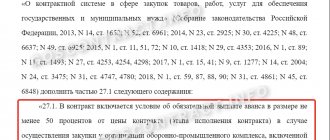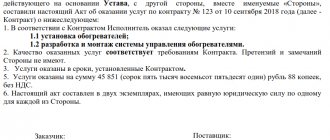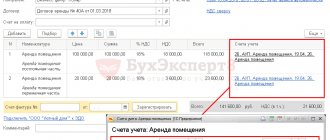When conducting any transaction, great attention must be paid to whether closing documents are available and properly executed. And we are not talking about bills, receipts, bank statements, which are also mandatory and very important.
Closing documents are papers in which both parties confirm the completion of the transaction in terms of the partners’ fulfillment of the very subject of the agreement.
To ensure that counterparties do not have any misunderstandings or misunderstandings regarding any details of the transactions being carried out, it is recommended that all the nuances are always carefully spelled out in the contract. It would not be superfluous to specifically indicate what documents are necessary in order for the agreement to be considered fulfilled.
Why are closing documents needed?
In order for a transaction to be legally considered completed, and not just paid, there must be confirmation of this fact in writing. This is why there are various closing documents.
The accounting of each enterprise requires strict accounting of transactions and the availability of all papers related to them. If money is transferred for a product or service, then the accountant must have a document stating that the company received it. And vice versa, the counterparty company uses the same documents to close the transaction for the receipt of funds and confirms exactly why it was paid this amount.
For different types of transactions, there are various contracts, as well as papers that confirm their implementation. We will consider what closing documents are for each of them below.
Document types
The standard list of closing papers includes:
- an act indicating the successful completion of a particular action;
- invoice;
- invoice of goods and transport or simply of a commodity nature.
Transactions for the supply of goods require the conclusion of an invoice. Separately, it is worth noting that only copies of these documents have the most important legal force. For this reason, even for temporary use, the copy is not suitable for lawfully performing actions.
Mandatory invoice details
When selling goods, the supplier is required to issue an invoice in two copies: for himself and the buyer. It should contain the following details:
- title and date of the document;
- Supplier name;
- description of the transferred values;
- quantity and unit of measurement (in natural and monetary equivalents);
- signature of the responsible person, indicating his position and initials.
The law does not establish a mandatory form of invoice. Any company can develop its own form. However, the above details, according to the Federal Law on Accounting, must be included in all closing documents under the supply agreement.
If you have any doubts about the correctness of compiling the form yourself, you can successfully use form No. TORG-12, which was considered mandatory until 2013.
Invoice
A document that has a strict form and which is the basis for the deduction or reimbursement of tax (for example, for transportation) for its value. In essence, this is a special case of an invoice, i.e. additional document. It is used only by those who participate in the general taxation system and pay VAT.
Private organizations that have the type of individual entrepreneur, simplified tax system or UTII are not required to provide this document. However, there are special cases for this, which the tax service will notify.
As with all such documents, the invoice must have two copies. One must be kept by the seller, and he must transfer the other to the buyer.
Transferred no later than 5 days from shipment of the goods. When checking the tax authorities, this document is very important, so its presence is mandatory first of all.
Consignment note (form TORG-12)
Example
For a sample, you can consider the following invoice:
Invoice No. 12 dated March 19, 2015
Sender: Chip LLC.
Recipient: Astra LLC.
Basis for release of goods: contract No. 7 dated January 13, 2015.
Power of attorney No. 25 dated February 28, 2015 through procurement manager E. G. Viktorov.
| No. | Name | Unit change | Qty | price, rub. cop. | Amount, rub. cop. |
| 1 | Cartridge | PC. | 1 | 3000,00 | 3000,00 |
| TOTAL | 3000,00 | ||||
Only one name released
Amount: Three thousand rubles. 00 kop.
Shipped by director _____________________ A. A. Sergeev
Product received _______________________
M.P.
Rules for filling and registration
It is very important to format everything correctly without errors or typos. To do this, you need to know what needs to be indicated in the document:
- Name;
- date of registration;
- name of the company (all participants in the transaction);
- current bank account and details;
- name of the transaction (quantitative composition and monetary value);
- Full names of responsible persons with their signatures;
- company seal.
There are also requirements for filling out forms:
- filled out using ballpoint pens, a computer or a typewriter;
- filled out only when planning an operation (rarely after its completion);
- All details must be indicated;
- internal forms are compiled at the enterprise, external forms are received from outside;
- Such documentation is maintained on standard printed templates.
Filling samples
Each primary form is filled out carefully and in accordance with all the rules. Invoices and payment documents are distinguished, the first are forms confirming the buyer’s readiness to make a transaction with the seller, and the second are reflecting the fulfillment of obligations by the parties. Forms of primary documents are filled out according to the sample as follows:
A sales receipt is confirmation of a transaction between a buyer and a seller regarding the purchase of a product or service. Typically, enterprises form it independently, but be sure to indicate:
- Name;
- information about the organization;
- type of transaction;
- natural and financial equivalent of the operation;
- Date of preparation;
- personal data of responsible persons and their signatures.
A delivery note is a complete list of goods that are transferred to the buyer . It states:
- data of the shipper and recipient (name, legal address, telephone and details);
- type of activity according to OKDP for the seller;
- data of the supplier and payer (similarly with the consignee and sender);
- contract number and date;
- carrier data (if its services are used).
Payment order is a paper that is sent to the bank from the payer with an instruction to pay a certain amount of funds to the recipient to his account. It contains:
- sum;
- name of the enterprise (its tax identification number, current account and checkpoint);
- Full name of the payer and his bank;
- the recipient's bank and account;
- purpose of payment;
- date of registration;
- signatures.
An invoice is a form that is issued by a seller to its buyer after the sale of a product or service and is the basis for income tax reimbursement . It states:
- buyer and taxpayer information (name, address and tax identification number);
- information about the sender and recipient;
- names of goods, their quantity, cost and price;
- final price for excise duty;
- tax rate;
- place of production;
- declaration number.
Payment demand is a settlement form with the demand of the recoverer of funds from the debtor and the transfer of the specified amount to the given account as payment of the debt. It states:
- Date of preparation;
- amount of debt;
- terms of payment;
- name of the enterprise and its current account indicating the financial institution;
- payer bank;
- Full name of the payer;
- purpose of payment.
Samples of filling out all forms can be found at the tax office or on the Internet. It is very convenient to use a single template for each type of document to save time and minimize errors.
Corrections in primary documents
Since all papers are valuable to the enterprise, mistakes should not be made when filling them out. There are certain rules for correcting shortcomings :
- It is correct to rewrite the non-strict reporting form and destroy the damaged version, but strict reporting cannot be destroyed. Just cross it out diagonally in red and write “Canceled.”
- You can cross out the error with a thin line and enter the correct data at the top, and next to it write “Corrected Believe” with the signature of the responsible person and seal.
- The error cannot be completely shaded; it must be readable.
- If the amount of transactions performed is incorrectly indicated, it should be adjusted in the current or next quarter.
- You can correct errors in calculations with negative numbers.
In case of several errors, a form is attached to the papers stating that the corrected facts should be believed , and the responsible person is indicated. It is also necessary to affix the date to the corrections and the seal of the company.
Confirmation of fulfillment of the service agreement
If the subject of the contract is services or work, then the main document closing the contract will be the act. As with the invoice, the transaction must be confirmed in the original.
However, there are some exceptions. If closing documents for services are not a mandatory condition of the contract, and the law allows their absence, then copies of acts can be placed under the accounting registers (if necessary). However, these papers can only be used for accounting convenience. Such cases occur when concluding lease agreements and offers.
A certificate of completion of work (services rendered) is a document that proves not only the completion of the transaction, but also the absence of claims from the customer. It acts as the main confirmation that allows you to account for the costs of the transaction and include them in tax returns. The act is printed in two copies, and they are kept by each of the parties to the transaction.
Payment documents
Checks – are used if the goods were paid for in cash. Orders - have the same function as checks, but if the goods were paid for by bank transfer. In addition, the payment order proves that a transfer was made from one person to another using the details specified in it.
There is a so-called strict reporting form. Its function is that when providing services to individuals, it can replace a cash receipt, but this works until July 1, 2021, and for catering employees until July 1, 2021 (replaces a receipt when purchasing food in a public catering facility).
The cash receipt must be printed using cash register equipment. If there is none (but there is a device that can print), then in some cases there is a deferment for entrepreneurs working with UTII or on the basis of a patent.
A sales receipt before July 1, 2021 is equivalent to a cash receipt for retail trade and catering until July 1, 2021.
The choice of certain payment documents depends on the type of activity and tax system. The form has its own, but must have mandatory details. The strict reporting form is printed in a printing house; printing on a regular printer is prohibited.
According to the rules of the tax organization, invoices are not a mandatory document. However, in case of discrepancies, the invoices will provide direct evidence that a particular condition has been met.
In addition to this function, accounts have practical benefits, since they reflect the list and quantity of goods, their cost and details for transferring funds. If the invoice spells out all the terms in detail, it can replace the contract.
Required details
The law has not introduced a unified form of work completion certificate. At each enterprise, closing documents under a service agreement are developed independently, but their execution must strictly comply with established standards.
The main details that must be present are:
- name and numbering of the document;
- what date it was compiled;
- name of the contractor and customer;
- operation description;
- unit of measurement and quantity (natural and cost indicators);
- signatures of the persons responsible for the operation, indicating their positions and initials.
Full list
Closing documents for accounting include:
- Contracts.
- Accounts.
- Receipts (both sales and cash receipts) and receipts.
- Money orders.
- Bank statements if payment was made through a bank.
- Cash order. It confirms that certain monetary transactions were carried out with money within the company.
- Advance report: required to note that their general cash was spent on any needs. It is accompanied by papers that can confirm that the money was spent on what it was allocated for (for example, checks).
- An invoice or act confirming the provision of services.
- Commodity transport report (abbreviated TTN). A document containing all the data on the transportation of goods. Route, travel start date, travel time and arrival date, quantity of goods, cost per unit, weight, full information about the driver and car.
- Time sheet. They indicate the time that each employee must work and data on how much he has already worked. And
- Payroll and payroll. One states how much money needs to be issued in the form of wages or bonuses, and the other statement states how much has been issued and the recorded fact of issuance.
- Invoice.
Sample
Act No. 98 dated December 12, 2014 on acceptance and delivery of work performed (services provided).
The Contractor LLC "Chip" represented by Director A. A. Sergeev on the one hand and the Customer LLC "Astra" represented by the supply manager I.V. Kulebyakin on the other hand drew up an act stating that the Customer accepted the work performed and made no claims regarding it It has.
| No. | Name | Unit change | Qty | price, rub. cop. | Amount, rub. cop. |
| 1 | Cartridge refilling | PC. | 1 | 500,00 | 500,00 |
| TOTAL | 500,00 | ||||
Total amount: Five hundred rubles 00 kopecks.
Executor:
Director of Chip LLC_______________________ A.A. Sergeev
Customer:
Purchasing Manager of Astra LLC______________________ I.V. Kulebyakin
Treaties
The drafting procedure occurs when a transaction is concluded. They include all the conditions by which it can be considered perfect: prices, time, etc.
- the essence of the agreement is the result of the transaction;
- amount and time of calculation: how much money, when to pay;
- the rights and obligations of each party;
- conditions for concluding and terminating the contract.
Each of the two copies is kept by both parties. Contrary to popular belief, in almost many cases it is not necessary to put the contract in writing, since many transactions do not require it.
However, this does not mean that a written contract is prohibited. Many still consider such paper to be a guarantee of a quality transaction.
Lack of closing documents
Invoices and acts must necessarily complete the transaction. Only after this is it considered complete and closed according to all the rules.
However, sometimes cases arise when closing documents are lost due to various circumstances. Or the head of the company has to deal with the negligence of his subordinates, and as a result of inspections, the absence of such papers is discovered.
One of the negative consequences of such unpleasant incidents is additional taxes. After all, the company’s accountant did not have the right to include in the declarations expenses that were not supported by documents. In this case, the income tax turns out to be underestimated, and you have to not only pay it extra, but also list all the fines and penalties. In addition, they will also be punished for the lack of documents themselves.
To avoid such consequences and not to spoil the company’s reputation and relations with tax authorities, it is necessary to carefully monitor the state of document flow and accounting at the enterprise. It is important to complete all paperwork on time and in the appropriate form.
If a manager doubts the competence or responsibility of his accountant, it is better to pay an audit firm and conduct an audit than to later pay tens or even hundreds of times more for the lack of documents.
Payment documents
Confirms payment for goods or services. This can be a payment order, payment request or cashier's check.
A cash receipt is issued using an online cash register. It is required to be used by everyone who accepts payments in cash and by bank cards. Exceptions are listed in paragraph 2 of Article 2 of Law 54-FZ. Under the patent, only some entrepreneurs must use the cash register, while the rest are exempt. Look at the list in the article, where you will also find information about the deferment until 2021 for individual entrepreneurs without employees and complete instructions for switching to online cash registers.
Article about online cash registers
The payment order remains with the entrepreneur when he transfers money via Internet banking. This document confirms the transfer of funds using certain details.
A sales receipt is an optional document that is issued at the buyer’s request. The buyer needs a document to confirm that he not only spent a certain amount of money, but also bought certain goods - for example, on behalf of his manager. The form of the sales receipt has not been established, so you can develop your own with the required details: name of the document, number, date, name of the LLC or full name of the individual entrepreneur, INN, goods and services, amount of payment and signature with transcript and position.
Individual. Just an individual
But involving individuals who are not registered as individual entrepreneurs in work/services means that the accountant will have to do additional work.
First, you need to make sure that the closing documents are drawn up. Not every “freelance artist” will be able to do this on their own, which means drawing up the document will fall on the shoulders of the accountant of the customer company.
But drawing up a document is only half the battle . While there are no signatures of both parties on it, it is just a piece of paper, not a document. Problems arise with the signature when, for example, the customer is a Moscow company, and the performer is a resident of the Far East. You have to exchange documents via mail, and this process can be very slow.
There is a service that will relieve accountants from paperwork with acts. Solar Staff automates document flow and payments to freelancers.
You enter into a single contract with Solar Staff instead of separate contracts with each contractor.
At the beginning of each month, you receive a complete set of closing documents indicating the actual work performed. The documents will include VAT.
Here's what our clients say:
“As long as freelancers have existed, there has been a problem getting normal closing documents from them. Now we work through Solar Staff, and this problem no longer exists. And this makes life very much easier for both me and the managers,”
— Larisa Shubina, chief accountant at the PRT agency.
“Solar Staff solved our problem of registering freelancers. Previously, it was difficult to sign acts - the performers had to come to the office, now everything is automated. With Solar Staff, everything has become transparent, it’s easy to prepare reports and there are no questions from the Federal Tax Service,”
— Tatyana Egorova, chief accountant at Brand Connection.
How to work as an individual entrepreneur with VAT
Most often, individual entrepreneurs choose to work with various variations of the simplified taxation system (STS, UTII, Unified Agricultural Tax). However, most large companies work with VAT and it is beneficial for them to deal with the same taxpayers, since they will be able to take into account the amount of tax received when calculating liabilities. Therefore, even if an individual entrepreneur offers products at reduced prices without VAT, it is not always more profitable for the enterprise to buy from him. But for individual entrepreneurs, working with payers of this tax can mean concluding large and profitable contracts.
How to proceed? Obviously, if an entrepreneur wants to work with large enterprises, he will have to master VAT. When registering with the Federal Tax Service, an entrepreneur who has not submitted an application for one of the simplified systems automatically becomes a tax payer on a general basis. One of these taxes is VAT.
At the same time, he can apply for an exemption from paying it subject to a number of conditions specified in the Tax Code of the Russian Federation.
If documents are missing
A transaction is considered completed and complete in all respects only when closing documents are present. Although sometimes it may happen that documents were lost or incorrectly compiled due to the negligence of accounting employees. This can have a very bad effect not only on the reputation of the company, but also have a great impact on the owner’s wallet if, during an audit by the tax company and other regulatory authorities, expenses were included in the declaration, but were not documented.
Such an oversight can lead to a lot of negative consequences. One of them: additional taxes. As a result of all this, income tax is reduced and it has to be paid additionally, including all penalties and interest.
Among other things, you may also be punished for the lack of documents themselves.
To prevent all this from happening, we strongly advise you to carefully monitor all turnover of the company’s documentation, paying special attention to closing documents. It may be necessary to hire a separate person whom you trust and whose qualifications allow him to carry out all inspection operations at the highest level.
Why exactly are documents needed?
In order for the transaction to be legally considered completed, and not just paid, all sorts of closing documents are required.
When carrying out any legal transactions, it is also extremely important that these transactions be documented in writing. If some funds have been deposited into the company’s account, then the accounting department must record this in writing.
Closing documentation comes in different types and depends primarily on the nature of the transaction. Next we will look at this issue in more detail.
When is the primary document drawn up?
The paper is drawn up some time before the end of the operation, and is signed at the moment of its completion.
For example, if we are talking about the sale of goods, invoices, acts and invoices are drawn up in advance, before the goods are transferred to the buyer - as soon as he has received and checked the cargo, he must sign the papers.
The same applies to other papers: contracts, the text of which the other party may want to check, pay slips for the issuance of salaries, and others.
Primary documents are stored for 5 years. During this time, the tax office may request them to conduct an audit of both parties. Documents related to employees, their salaries and transfers to the Pension Fund must be kept for at least 75 years.
Mastering the full cycle of accounting “from scratch” to reporting under the guidance of an experienced teacher-practitioner - accounting courses
It is important to know: the destruction of primary documents takes place by a specially created commission with the preparation of a report and inventory.
Most likely, you will need information on how to submit a tax return online.
Primary documents
What it is? Primary accounting documents are a standard form, generated and filled out according to a specific template .
It is needed to complete all operations on the farm. It is these forms that confirm the implementation of various transactions (purchase, sale, lease, etc.), the inflow and outflow of the enterprise’s finances and other monetary transactions. The need to maintain primary accounting documents is determined by Federal Laws of the Russian Federation No. 129-FZ and No. 402-FZ. Requirements and samples are formed by state statistical bodies, and are confirmed by specific ministries.
Primary documentation in accounting is forms that record completed business transactions. Any entry in accounting or register is possible only if they are available. In essence, they are confirmation of all existing financial processes in the enterprise and the basis of relations with the tax office.
Types of primary documents
What is included in this class of papers? All reports on any financial activities . Based on the characteristics and characteristics of the forms of primary documents, they are divided into:
By purpose:
- administrative (instructions),
- performing (statements).
By filling method:
- combined (advance report),
- strict (coupons or tickets).
By volume:
- primary (cash orders),
- summary (statements of expenses).
By type of operation:
- one-time (reports),
- accumulative (limit-fence cards).
By place of compilation:
- internal (invoices or advance reports),
- external (supplier invoices, payment requirements).
They can be standard (registration of transactions) or specialized (for highly specialized transactions).
What applies to primary documents? Their list is as follows:
- bank and cash statements,
- money orders,
- advance payment reports (with attached receipts from hotels, travel cards, receipts for stationery, etc.),
- sales receipts,
- invoices,
- bills,
- working time records,
- statements.
Rules for filling and registration
It is very important to format everything correctly without errors or typos. To do this, you need to know what needs to be indicated in the document:
- Name,
- date of registration,
- name of the company (all participants in the transaction),
- current bank account and details,
- name of the transaction (quantitative composition and monetary value),
- Full names of responsible persons with their signatures,
- company seal.
There are also requirements for filling out forms:
- filled out using ballpoint pens, a computer or a typewriter,
- filled out only when planning an operation (rarely after its completion),
- All details must be indicated,
- internal forms are compiled at the enterprise, external forms come from outside,
- Such documentation is maintained on standard printed templates.
Firms usually have ready-made samples of such forms and how to fill them out to simplify the process.
Corrections in primary documents
Since all papers are valuable to the enterprise, mistakes should not be made when filling them out. There are certain rules for correcting shortcomings :
- It is correct to rewrite the non-strict reporting form and destroy the damaged version, but strict reporting cannot be destroyed. Just cross it out diagonally in red and write “Canceled.”
- You can cross out the error with a thin line and enter the correct data at the top, and next to it write “Corrected Believe” with the signature of the responsible person and seal.
- The error cannot be completely shaded; it must be readable.
- If the amount of transactions performed is incorrectly indicated, it should be adjusted in the current or next quarter.
- You can correct errors in calculations with negative numbers.
In case of several errors, a form is attached to the papers stating that the corrected facts should be believed , and the responsible person is indicated. It is also necessary to affix the date to the corrections and the seal of the company.
Consequences of errors in invoices
Like any document, an invoice should not, but may contain “technical” errors.
Paragraph 2 of Article 169 of the Tax Code of the Russian Federation clearly defines on the basis of which errors a VAT refund can be refused, and which are not recognized as significant and do occur.
The task of the tax authorities is to control the timely receipt of taxes to the budget, increase their amount, prevent non-payment and reduce the amounts subject to deduction. If a specialist from the department identifies inaccuracies or typos, he will form a negative conclusion and no VAT deduction will be made.
If an employee of the Federal Tax Service was able to identify the participants in the transaction by name or tax identification number, type of product or service and their cost, amount and amount of tax, then I have no right to refuse a VAT deduction.
The signature on the documents must be affixed with your own hand; the use of a facsimile may be regarded as an error in the preparation of the document. Judicial practice proves the opposite; however, to save time on communicating with the tax service, endorse the documents yourself or by third parties, if they have the authority.
Of course, subsequently, after identifying any errors, it will be necessary to make changes to the counterparty’s registration card in order to avoid misunderstandings and controversial situations with government agencies in the future.







